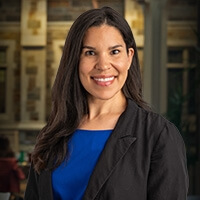It started with the discussion of a classroom assignment in February 2021. Then-2L James Kirwan, ’22, asked Professor William Novak whether any legal history journals accepted student scholarship. Learning that existing legal history journals catered to professional scholars, he was disappointed—but not swayed.

Instead of giving up, Kirwan decided to develop a legal history journal that would accept student scholarship in addition to professional scholarship. He reached out to students across the University, asking for their help in building this new idea. As the number of students involved grew, so, too, did the scope of the journal.
In September 2022, the team announced the inaugural issue of the Michigan Journal of Law & Society (MJLS), the first law school journal in the country to focus on the intersections of law, history, and the social sciences, and also the first law school journal in the country to incorporate law students, PhD students, and a faculty editorial board into its review and editorial processes.
“The only thing that is similar is the Yale Journal of Law & the Humanities,” said Kirwan, editor in chief of the first issue and currently an honors attorney at the National Labor Relations Board. “But we’re the only one that looks at law and the social sciences. In addition, we’re the only law school journal in the country that has a peer review component, a PhD component, and a law student component. So we have more expertise that can ensure that the articles that are published are top notch in terms of methodology and contributing to the relevant literature.”
Recruiting the best and brightest

When Kirwan approached Novak with his idea for a new journal, the professor was enthusiastic.
“The goal was to use the law school model for the journal while reaching out for content from history, sociology, psychology, economics, political science, and other disciplines,” said Novak. “I thought it was a brilliant idea. And the students basically took it from there.”
The next step was finding the best people across the University and beyond to participate and lend their expertise.
“We’ve got all these amazing programs at Michigan,” said Kirwan. “They’re top-notch programs internationally and have amazing PhD students. So why not have them get involved, too?”
The team also developed a 13-member faculty review board that advises the journal and reviews submissions once the students have done an initial screening. While mainly from various departments at U-M, faculty on the board also hail from other universities, including Harvard and Oxford.
“I think the real innovation has been getting talented Michigan Law students working actively with our equally talented social science and humanities PhDs to curate a broadly interdisciplinary publication,” said Novak.
The interdisciplinary work has definitely benefited her law studies, said 3L Annie Sloan, the journal’s current editor in chief, who, along with her team, is working on the second issue for publication in spring 2023.
“There’s a political context and historical context and social context, but we rarely get to explore it and discuss it in class,” she said. “It’s really great—necessary, even—to have this outlet where we can dive into it.
Continuing to evolve
To maintain a focus on law across multiple disciplines, each issue will have a theme. The first issue, for example, centers on sovereignty, states, and inclusion, while the second issue will focus on law and social movements. Though the journal is considered provisional until it meets all requirements to receive faculty approval, the editors plan for its content to evolve.
“We will continue to add more elements and grow,” said Sloan. For example, the second issue is adding a student scholarship component, with input from editors at other Law School journals, members of the faculty, and students in various disciplines.
That cooperation has proved invaluable as Sloan and Kirwan have worked on MJLS.
“We have been warmly embraced by the community at Michigan, and the broader law and society community, and that’s been helpful for our progress,” said Sloan.
That’s all part of the growth process the students have experienced, which Novak acknowledged.
“The students really fed off the interdisciplinary conversations they were having as well as the broadened subject-matter content of this particular journal,” he said. “I think they really professionalized through this experience and broadened their vision of the vast range of topics and materials that could be included beneath the rubric of studying this thing we call ‘law.’
“The law and society movement generally is a very successful, ongoing operation in the US and the world, but I anticipate this journal injecting some new youthful energy and intelligence to this long-standing field of inquiry.”
Banner photo: The editors of the first issue of the journal included both Law School students and PhD students from other U-M departments.







